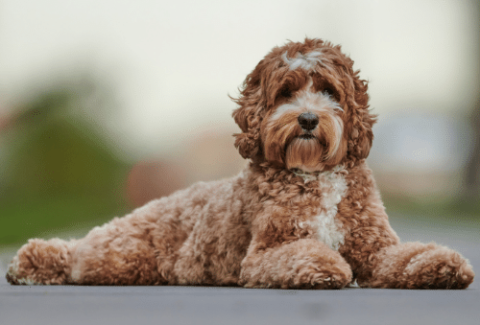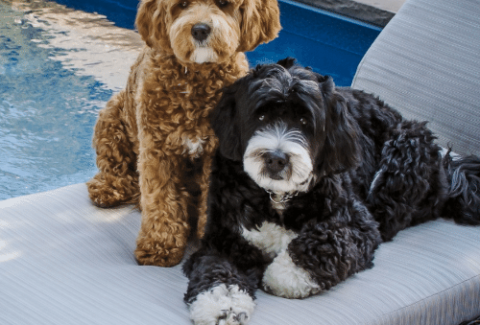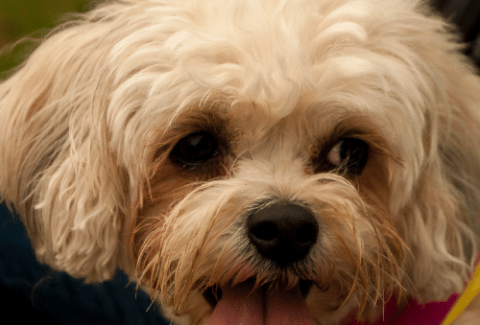Do Bernedoodles Like Cats?
August 24, 2021 2022-02-12 6:53Do Bernedoodles Like Cats?
If you’re reading this, chances are one of two things is happening. You are considering adding a Bernedoodle to your household that already includes a resident feline, or you have a Bernedoodle and you’re wondering if he’d welcome that adorable kitten you see on the animal rescue’s website into your lives.
The quick answer to the question “Do Bernedoodles like cats” is that with the correct introduction, they can become great friends. You should always make sure to supervise interactions because of the size difference though!
Let’s look at why some dogs and cats don’t get along and what you can do to help smooth the acclimation process.
Table of Contents
Can a cat and a Bernedoodle really live together harmoniously?
In short, yes, but there are exceptions to every rule. Bernedoodles are known for being generally great dogs: affectionate, goofy, playful, and friendly to people (including small children) and other animals. They come with the genetic predisposition to having tolerant and gentle temperaments and being extremely loving.
The prey drive
While the Bernedoodle might have an easier time adjusting to the presence of a cat because of their nature, it’s important to remember that every dog, no matter the breed, has a prey drive. The prey drive is the dog’s deep desire and enthusiasm to chase, hunt, capture, or destroy a prey animal. When you see a dog chasing squirrels, rabbits, ducks, chipmunks, and even cats, it’s because of this desire. Some dogs have much higher prey drives than others. Some breeds with the highest prey drives are:
- Rhodesian Ridgeback
- Greyhound
- Australian Cattle Dog
- Beagle
- Doberman Pinscher
- Bull Terrier
- Cocker Spaniel
- Pointer
Breeds with the lowest prey drives include:
- Bulldog
- Great Pyrenees
- Pug
- Maltese
- Pomeranian
- Havanese
Neither the Bernese Mountain Dog nor the Poodle are regarded as having very high prey drives, so the Bernedoodle is regarded as having a lower one, as well. Low prey drive doesn’t mean no prey drive, however. Always be aware that if something fluffy and small runs by your dog, no matter what breed you have, your dog could dart after it when you least expect him to.
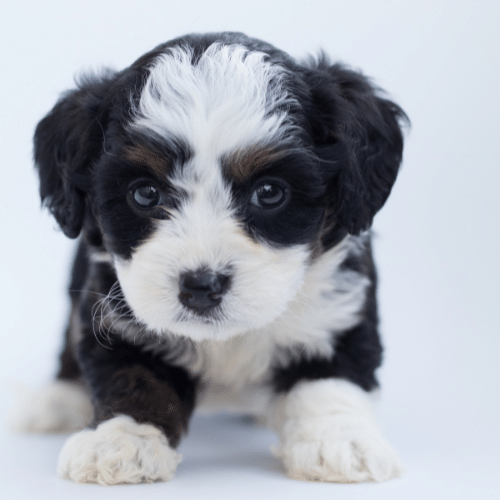
The introduction process
Introducing a cat and dog can be tricky no matter what breed you have. Some dogs just can’t live with cats. Their prey drives create an unsafe environment and the dog can’t be trusted to not harm the cat.
The easiest time to introduce a dog and cat is when they are both young. A puppy and kitten growing up together in the same house at the same time will make them know and understand each other from an early age, giving them the best option to become friends.
Since people don’t often get puppies and kittens together, but rather add new companions to their households over time, it is possible for an adult cat to get used to a puppy and an adult dog to get used to a kitten. An adult dog meeting an adult cat might not go so well at first, or even at all. Adult dog/adult cat is the situation that might take the longest for them to acclimate to, if they even ever do at all. The Bernedoodle has a good chance at successfully living in a house with a cat if the introduction is executed properly.
Introducing a Bernedoodle puppy to a kitten
Puppies and kittens are typically playful, curious, a bit mischievous, and always observing. As babies, these animals are constantly learning about the world around them and taking it all in. It’s up to us to show them how to navigate life. We show them their home, teach them manners, potty-train them, and protect them.
As the animals grow, they become familiar with their home and its residents. This is why getting a puppy and kitten together forces them to instantly accept one another. They won’t remember a time without the other, and therefore, they will bond to each other as family members. Dogs and cats raised together from the start of their lives can grow to become best friends.
When you introduce your Bernedoodle puppy and your kitten, start with short, monitored interactions. Both have lots of energy and want to play, and a puppy of this breed is likely going to be bigger than a kitten. It is best to create calm moments for the pup and kitten to hang out. This could for example be you holding the kitten on your lap while your Bernedoodle pup lays next to you chewing on a bone.
Make sure the playing doesn’t become too rough and cause injuries. Remember that kittens have tiny, sharp claws they use when playing and they can injure a puppy’s eyes and nose. Don’t leave your puppy and kitten unattended together and be sure to separate them when playtime is over. Each will need their own separate spaces for meals and proper rest.
Introducing a Bernedoodle puppy to an adult cat
Your adult cat already has an established personality and way of life. Introducing a puppy to the mix can disrupt that way of life and annoy your kitty. While the Bernedoodle puppy is silly and wants to play, your adult cat may find this behavior undesirable and won’t want to be jumped on, playfully nipped, or chased.
If your cat is showing signs of being upset, like flat ears, hissing, raising a paw to swipe, or growling, remove her from the situation and let her go to her safe spot in the home. Naturally curious, she might be interested in smelling the puppy and getting to know him over time, but usually on her terms. It’s best not to force things.
Try sitting on the floor with your puppy and letting your cat come over to investigate the situation when she feels comfortable. She may observe from across the room, or she may leave the room completely. To make her feel more at ease, give her plenty of spaces that are just hers to which she can retreat when she’s feeling overwhelmed. If she has the opportunity to leave when she wants to, she’s more likely to feel safe coming back and checking things out again.
Remember that adult cat claws are bigger and can do more damage than kitten claws, so don’t leave your cat and puppy alone together until you’re sure they can be trusted. Over time, with love and patience from you, she can learn to live peacefully with your pup.
Introducing an adult Bernedoodle to a kitten (or adult cat)
This introduction should take place separately rather than face-to-face at first to see how your Bernedoodle will react to a kitten. Because the kitten is so small, keep her protected by showing her to your dog through a baby gate.
Watch your dog’s reaction. Interested, playful, curious, and trying to smell the kitten? All good signs. Some prey drive trigger signs to watch for are high-pitched whining, shaking, staring, and being hyper-focused. If you try to get your dog’s attention and can’t because he won’t break his focus from the kitten, this is a sure sign you should continue to keep them separated and your dog’s prey drive is very high.
To avoid a dangerous situation, work on desensitizing your dog through professional training methods before you allow a face-to-face meeting of your Bernedoodle and kitten.
If your dog is relaxed, chilled out, and interested in the kitten but you can still get him to follow a command and pay attention to you, a face-to-face meeting is possible.
As far as your kitten goes, if she’s hissing, growling, trying to hide, or arching her back, she’s scared and not ready for a face-to-face meeting yet. Allow them to keep getting used to each other through a baby gate until your kitten relaxes and seems at ease when your dog approaches.
(This is also the approach you should choose if you decide to add a rescue dog to a home with a cat.)
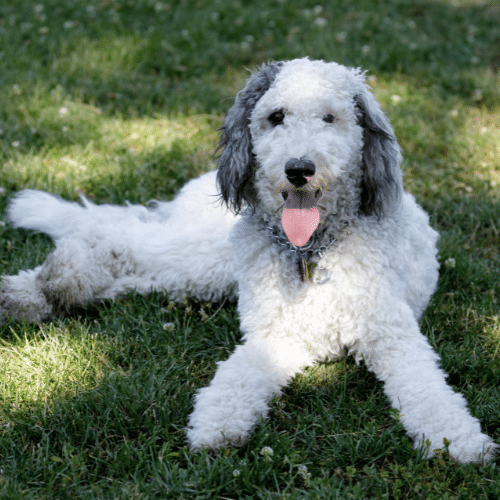
The bottom line
While all dogs have prey drives, some are higher than others. The Bernedoodle ranks on the lower end and is known for liking and being a friend to other animals. Cats and Bernedoodles can learn to love one another if they’re raised together and each given the respect and safe spaces they need. Watch for signs of a heightened prey drive in your Bernedoodle when introducing him to a cat or kitten, and keep them separated until they get used to one another and your dog becomes desensitized to the cat.

Author: Jessica Rossetti
Jessica lives in Chicago with her husband, Dominic, and their rescued cat, Toast. She has lived with dogs for over 30 years and spends her days writing, caring for various animals, and enjoying her backyard that has become an oasis for wild creatures.
Her passion for animals began at a young age when she would bring home the lost dog or cat. As she got older, she went on to bring home an injured bird or raccoon. This love and desire to help all creatures led to her work as an adult with various animal rescues, where she saved the lives of many domestic and wild animals while learning the necessary skills to care for them.
Owning and operating a professional pet care service in Chicago for the past twelve years, Jessica cares for dogs in her home while writing full-time.
Steffi Trott
Related Posts
Are Labradoodles High-Maintenance?
At what age do Labradoodles calm down?
Are Pomeranians Good for First-Time Dog Owners?
Are German Shepherds Hypoallergenic?
Are German Shepherds Smart?
Are German Shepherds Vocal?
Are German Shepherds Good With Kids?
Do Bernedoodles like Water?
How Long Can Australian Shepherds Be Left Alone?
How Much Exercise Does a Cavachon Need?
Check out our effective and affordable online dog training courses!
-
Sale Product on sale
 Tackling Reactivity Bundle
Tackling Reactivity Bundle
MONEY BACK GUARANTEE$564.00$49.00 -
Sale Product on sale
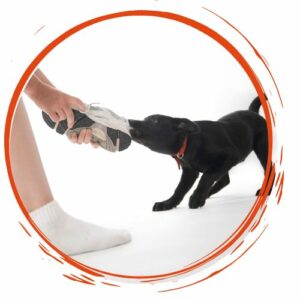 Perfect Obedience Bundle
Perfect Obedience Bundle
MONEY BACK GUARANTEE$349.00$49.00 -
Sale Product on sale
 Ultimate Puppy Bundle
Ultimate Puppy Bundle
MONEY BACK GUARANTEE$416.00$49.00 -
Sale Product on sale
 The Perfect Focus Bundle
The Perfect Focus Bundle
MONEY BACK GUARANTEE$445.00$169.00 -
Sale Product on sale
 Ultimate Masterclass Bundle
Ultimate Masterclass Bundle
MONEY BACK GUARANTEE$2,213.00$499.00


